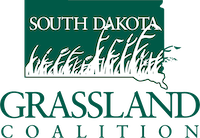The Value of Native and Exotic Plants
Native and exotic plants have many values that label them as ‘good’ or ‘bad’. For instance, the native common milkweed was historically important to indigenous cultures for food and medical purposes, but most farmers devalued the plant as an invasive competitor in cropland and pastures. Today, society places high value on this perennial flower as monarch butterfly populations are inextricably linked to milkweed. Monarchs rely on milkweed for all phases of life. Concurrently, common milkweed has been rediscovered as a forage plant and is often selected by cattle, with a crude protein content that exceeds a typical cow’s basic needs. What if other broadleaf plants had similar positive values? Most of our native flowering plants (forbs) have tremendous value, and it is time we revisit this fact in this era of conversion and rampant herbicide spraying of our native rangelands.
Livestock will eat weeds
In 2004, Kathy Voth ‘perfected’ a technique for training livestock to eat weeds by capitalizing on the fact that positive nutrition is recognized very quickly by the cow’s brain even if the forage does not initially taste good. Kathy then provided an evaluation of South Dakota’s state and county-level noxious weeds for potential palatability to cattle. Based on her experience and a review of the known literature, she provided guidance regarding whether livestock could be trained to eat these problematic South Dakota plants. But, were these plants actually ‘good’ forage that we could assess with more data?
Most livestock producers view native goldenrod as a non-nutritious weed that competes with grass. Goldenrod is a persistent plant that increases with heavy grazing pressure. Once established, even the best grazing regimes tend not to substantially decrease goldenrod populations. Using Kathy Voth’s methods, we found that goldenrod has a relatively high crude protein content (15%) while the upper part of the plant and the bud are about 24% – as good or better than most alfalfa. We also discovered that old cows in our control herd were already nipping the upper portions of the plant at a rate of about 50% without any ‘help’ from us. Dr. Sandy Smart at SDSU discovered that goldenrod tends to ‘share’ things such as water and minerals with the surrounding plant community, bringing these resources up from the soil profile and potentially improving the production of the surrounding grasses and other plants. Goldenrod has proven value for pollinators, and livestock, and as an indicator of rangeland health. It’s not something cattle will eat exclusively, but it does have a purpose.
Understanding targeted grazing of certain species
Source: SDGC Newsletter
